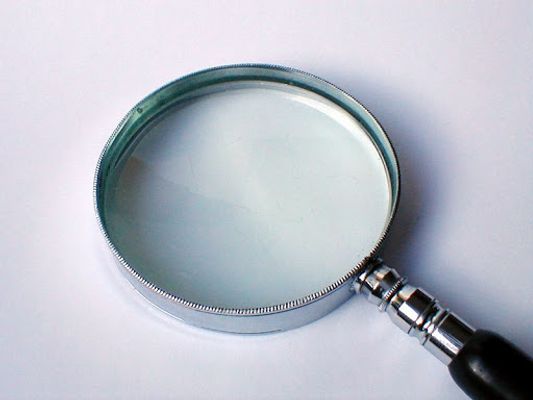8.1.1
Overview of Structure
Overview of the Structure of Atonement
Overview of the Structure of Atonement
Atonement is structured in 4 different sections: Parts One, Two and Three and then an epilogue entitled London, 1999.


Importance of Part One events
Importance of Part One events
- Each section has a distinct time and geographical setting.
- The events in Parts Two, Three and the epilogue are heavily influenced by the key events in Part One – the sexual assault on Lola and the arrest of Robbie.


Roles of settings in Atonement
Roles of settings in Atonement
- Each setting plays a vital role in the novel:
- The country house setting of Part One reveals the darkness which lies beneath the façade of upper-middle-class respectability and sophistication;
- The wartime settings of Parts Two and Three provides us with a graphic illustration of the depths of cruelty and suffering which mankind is capable of.


Different focalizers in Atonement
Different focalizers in Atonement
- Parts Two and Three are focalised from the perspective of one particular character:
- Robbie in Part Two;
- Briony in Part Three.
- Part One has various focalizers:
- Briony in Chapter 1;
- Cecilia in Chapter 2;
- Emily in Chapter 6;
- Robbie in Chapter 8.
1Introduction to Atonement
1.1Introduction & Background to Atonement
1.2Focus of Your Exam: Crime Texts
2Chapter Summaries & Analysis: Part One
2.6Chapter 6
2.10Chapter 10
2.11Chapter 11
2.12Chapter 12
2.13Chapter 13
2.14Chapter 14
3Chapter Summaries & Analysis: Part Two
3.1Pages 191-201: To the Farmhouse
3.2Pages 202-213: The Night in the Barn
3.3Pages 214-226: The Attack
3.4Pages 226-234: Robbie's Reflections
3.5Pages 234-246: To the Bridge over the Canal
3.6Pages 246-254: Arrival at Dunkirk
3.7Pages 254-265: To the Cellar
4Chapter Summaries & Analysis: Part Three
4.1Pages 269-277: London, 1940
4.2Pages 277-286: Briony as Writer
4.3Pages 287-315: Victims of War
4.4Pages 315-327: Lola & Paul Marshall’s Wedding
4.5Pages 328-349: The Visit
5Chapter Summaries & Analysis: Part Four
5.1Epilogue: London, 1999 - Pages 353-371
6Key Character Profiles
6.1Briony Tallis
6.2Robbie Turner
6.3Cecilia Tallis
6.5Paul Marshall
6.6Emily Tallis
7Key Themes
7.1Introduction to Crime Texts
7.2Crimes in Atonement
7.3Criminals in Atonement
7.4Victims in Atonement
7.5Detection in Atonement
7.6Settings in Atonement
7.7Guilt & Punishment in Atonement
8Writing Techniques
9Context
9.1Historical Context
9.2Social Context
9.3Literary Context
10Critical Debates
10.1Marxist Literary Criticism
Jump to other topics
1Introduction to Atonement
1.1Introduction & Background to Atonement
1.2Focus of Your Exam: Crime Texts
2Chapter Summaries & Analysis: Part One
2.6Chapter 6
2.10Chapter 10
2.11Chapter 11
2.12Chapter 12
2.13Chapter 13
2.14Chapter 14
3Chapter Summaries & Analysis: Part Two
3.1Pages 191-201: To the Farmhouse
3.2Pages 202-213: The Night in the Barn
3.3Pages 214-226: The Attack
3.4Pages 226-234: Robbie's Reflections
3.5Pages 234-246: To the Bridge over the Canal
3.6Pages 246-254: Arrival at Dunkirk
3.7Pages 254-265: To the Cellar
4Chapter Summaries & Analysis: Part Three
4.1Pages 269-277: London, 1940
4.2Pages 277-286: Briony as Writer
4.3Pages 287-315: Victims of War
4.4Pages 315-327: Lola & Paul Marshall’s Wedding
4.5Pages 328-349: The Visit
5Chapter Summaries & Analysis: Part Four
5.1Epilogue: London, 1999 - Pages 353-371
6Key Character Profiles
6.1Briony Tallis
6.2Robbie Turner
6.3Cecilia Tallis
6.5Paul Marshall
6.6Emily Tallis
7Key Themes
7.1Introduction to Crime Texts
7.2Crimes in Atonement
7.3Criminals in Atonement
7.4Victims in Atonement
7.5Detection in Atonement
7.6Settings in Atonement
7.7Guilt & Punishment in Atonement
8Writing Techniques
9Context
9.1Historical Context
9.2Social Context
9.3Literary Context
10Critical Debates
10.1Marxist Literary Criticism
Unlock your full potential with Seneca Premium
Unlimited access to 10,000+ open-ended exam questions
Mini-mock exams based on your study history
Unlock 800+ premium courses & e-books